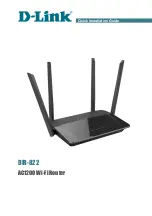
16-7
Cisco ME 3800X and 3600X Switch Software Configuration Guide
OL-23400-01
Chapter 16 Configuring Resilient Ethernet Protocol
Configuring REP
Default REP Configuration
REP is disabled on all interfaces. When enabled, the interface is a regular segment port unless it is
configured as an edge port.
When REP is enabled, the sending of segment topology change notices (STCNs) is disabled, all VLANs
are blocked, and the administrative VLAN is VLAN 1.
When VLAN load balancing is enabled, the default is manual preemption with the delay timer disabled.
If VLAN load balancing is not configured, the default after manual preemption is to block all VLANs at
the primary edge port.
REP Configuration Guidelines
•
We recommend that you begin by configuring one port and then configure the contiguous ports to
minimize the number of segments and the number of blocked ports.
•
If more than two ports in a segment fail when no external neighbors are configured, one port goes
into a forwarding state for the data path to help maintain connectivity during configuration. In the
show rep interface privileged EXEC command output, the Port Role for this port shows as Fail
Logical Open; the Port Role for the other failed port shows as Fail No Ext Neighbor. When the
external neighbors for the failed ports are configured, the ports go through the alternate port state
transitions and eventually go to an open state or remain as the alternate port, based on the alternate
port election mechanism.
•
REP ports must be Layer 2 trunk ports. REP ports cannot be access ports.
•
REP is not supported on ports configured with service instances.
•
Be careful when configuring REP through a Telnet connection. Because REP blocks all VLANs
until another REP interface sends a message to unblock the VLAN, you might lose connectivity to
the switch if you enable REP in a Telnet session that accesses the switch through the REP interface.
•
You cannot run REP and STP or REP and Flex Links on the same segment or interface.
•
If you connect an STP network to the REP segment, be sure that the connection is at the segment
edge. An STP connection that is not at the edge could cause a bridging loop because STP does not
run on REP segments. All STP BPDUs are dropped at REP interfaces.
•
You must configure all trunk ports in the segment with the same set of allowed VLANs, or a
misconfiguration occurs.
•
REP ports follow these rules:
–
There is no limit to the number of REP ports on a switch; however, only two ports on a switch
can belong to the same REP segment.
–
If only one port on a switch is configured in a segment, the port should be an edge port.
–
If two ports on a switch belong to the same segment, they must be both edge ports, both regular
segment ports, or one regular port and one edge no-neighbor port. An edge port and regular
segment port on a switch cannot belong to the same segment.
–
If two ports on a switch belong to the same segment and one is configured as an edge port and
one as a regular segment port (a misconfiguration), the edge port is treated as a regular segment
port.
•
REP interfaces come up and remain in a blocked state until notified that it is safe to unblock. You
need to be aware of this to avoid sudden connection losses.
















































